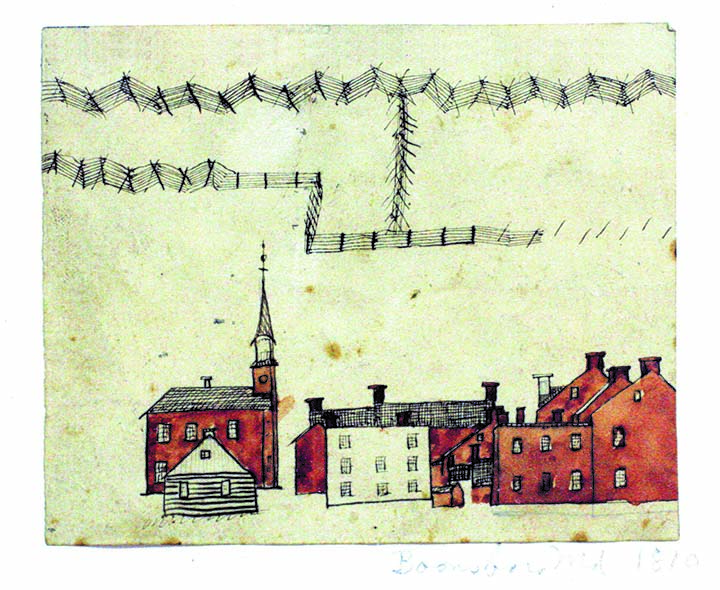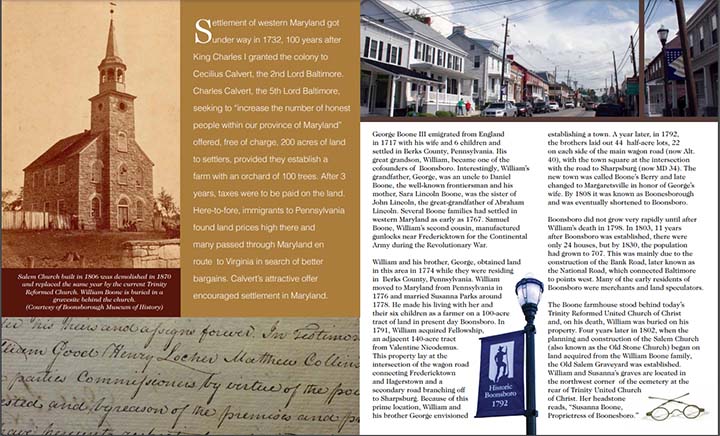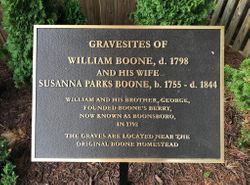History of Boonsboro
Nestled at the foot of South Mountain between Hagerstown and Frederick, lies a rural town founded in 1792 by two brothers, George and William Boone, cousins of Daniel Boone. The brothers and Daniel had the same grandfather, George Boone III.
William Boone and Susanna Parks were married in 1778. A year later, they moved into a log house on Beale’s Chance, a 100-acre farm, which surrounded what is now Potomac Street.
On July 26, 1791, William Boone purchased 140 additional acres from Valentine Nicodemus. This tract of land, called Fellowship, was adjacent to his farm and lay along the wagon road from Fredericktown to Hagerstown.
With the help of his brother George, William began to plan the town. Using the secondary wagon road that turned off toward Sharpsburg as the center or “town square”, the Boones laid out a total of 44 half-acre lots (22 along each side of the main road). This major road became Main Street. The majority of the original 44 lots were 82.5 feet wide by 264 feet deep. The sale of the first lot was recorded on November 11, 1792. Frederick Netal paid 5 pounds for lot #15. The correct date of the town’s founding is 1792.
George and William Boone called their new town Boones Berry, though the original deeds of all town lots recorded at Washington County Courthouse used the name Boonesberry Town or Town of Boones Berry. The name was later changed to Margaretsville in honor of George Boone’s wife and then changed several times throughout the years from Margaretsville to Margaret Boones Ville, to Boonesborough, and finally to Boonsboro. William died in 1798 and he and Susanna are buried in Boonsboro.
Boonsboro did not grow very rapidly. In 1803, 11 years after the town was established, there were only 24 houses. Boonsboro’s growth and prosperity increased in part by the construction of the Bank Road, later know as the National Road, a turnpike connecting Baltimore to the west. In 1823, a new process called “macadam” was used to finish an unpaved section of the turnpike from Boonsboro to Hagerstown. This was the first time the road building process was used in the United States.
In 1827, the citizens of Boonsboro erected the first monument to honor President George Washington at the top of South Mountain. The rugged stone monument stands 34 feet in height, and is located on part of the Appalachian Trail. By 1830, the population of Boonsboro had grown to 707.
Incorporated in 1831, the citizens of Boonsboro held the Town’s first election. On September 14, 1862, the Battle of South Mountain began. This was the first battle of the Civil War fought on northern soil. During the Civil War, Boonsboro’s churches and public buildings were used as makeshift hospitals for wounded soldiers. Soldiers were transported to Boonsboro throughout two of the bloodiest battles at South Mountain and Antietam. In the late 19th century, Boonsboro was chosen as the setting for a famous Civil War play named “Heart of Maryland,” which later became a successful silent motion picture.
In the 20th century, agriculture products and fruit were the principal source of income for the rural area around Boonsboro. The town of Boonsboro became well known for it’s delicious “Hearts of Gold” cantaloupes.
In 1939, the citizens of Boonsboro created Shafer Memorial Park as the focal point of the town. Today the park hosts major public events such as Boonesborough Days, The Great Boonsboro Rescue Company Carnival, and The Founder’s Day Celebration. The Founder’s Day Celebration coincides with the National Pike Festival, which features a 20-mile wagon train journey from Clear Spring to Boonsboro along the original route of the National Pike.



